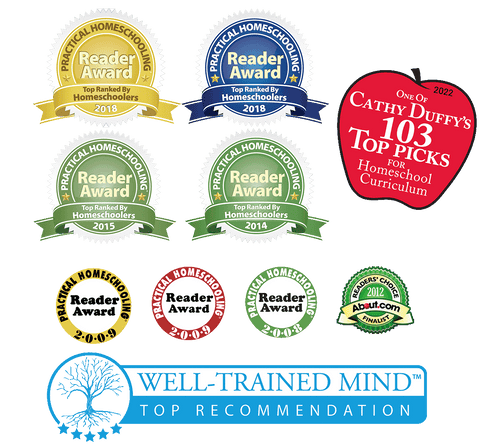Welcome to the Experiment Hub
This section includes hands-on experiments aligned with RS4K books and chapters. To access an experiment, hover over the desired chapter and click to open a downloadable PDF.
Each PDF contains:
Student Experiment pages
Teacher instructions
For Books 1–6:
You’ll find a quick experiment instruction page for students and matching guidance for teachers.
For Book 7
Instructions are built into the student notebook pages, and the teacher’s guide includes tips for supporting more advanced learners.

Book 1

- Chapter 1 - Liquid Showdown: Which Melts Ice Fastest?
- Chapter 2 - Adventures: Paper Cutting Challenge
- Chapter 5 - Blowing Up a Balloon with Baking Soda and Vinegar
- Chapter 7 - Life or Not? The Great Pet Rock Investigation
- Chapter 9 - Germ Quest: The Secret Life of Bacteria
- Chapter 11 - Squish and Smash: The Marshmallow Physics Experiment
- Chapter 12 - Launch Lab: Unleashing Paper Airplane Power
- Chapter 15 - Rock Quest: The Science of Stones and Minerals
- Chapter 17 - Quake and Shake: The Soil Jiggle Test (Home Edition)
- Chapter 21 - Hot and Cold in Space: Planet Temperature Quest
Book 2

- Chapter 1 - Go Gadgets! Designing and Making Your Own Science Tools
- Chapter 3 - Acid or Base? The Litmus Paper Challenge
- Chapter 5 - Myth Buster Test: Can the Tongue Really Sense Different Tastes?
- Chapter 9 - Mold Patrol: Keeping the Fuzz Away
- Chapter 12 - Raceway Rumble: Testing Toy Cars on Various Surfaces
- Chapter 13 - Mission: Rescue the Moon Rover
- Chapter 17 - Breath Detectives: Discovering CO₂ with Limewater
- Chapter 19 - Night Sky Adventures: Mapping the Stars
Book 3

- Chapter 3 - Cracking the Case of Mixed Dyes with Column Chromatography
- Chapter 4 - Cross-Linked Chaos: The Polymer Science of Slime
- Chapter 7 - Plant Power: Discovering What Makes Plants Grow
- Chapter 8 - From Roots to Leaves
- Chapter 12 - Part 1 - Power Circuit Parade: Pass the Electrons!
- Chapter 12 - Part 2 - Light It Up: DIY Paper Circuit Fun
- Chapter 14 - Raindrops: Simulating the Water Cycle
- Chapter 16 - Exploring Earth's Invisible Magnetic Field
- Chapter 19 - Milky Way Walkabout
- Chapter 22 - Nature's Recycler-Biology and Chemistry of the Compost Cycle
Book 4

- Chapter 2 - The Electron Hotel
- Chapter 5 - Hands-on-Heat: A Molecular Model of Energy Transfer
- Chapter 8 - Exploring Pill Bug and Sow Bug Behavior
- Chapter 11 - Water Music Board
- Chapter 12 - What Color is Your Atom?
- Chapter 14 - Cycle Spy Activity: Where did that Come From?
- Chapter 15 - Battle for the Ecosystem Game
- Chapter 16 - From Wind to Water to Watts
- Chapter 18: Search for an Exoplanet
- Chapter 20 - Tough Tardigrades : Space Survivors on a Slide
Book 5

- Chapter 1 - Precision and Accuracy: The Great Liquid Lab
- Chapter 4 - Explaining Atoms to the People of Planet Atomis
- Chapter 6, 7 & 8 - Cell Theory and the Definition of Life
- Chapter 9 - Battle of the Bacteria: Which Cleaner Will Win?
- Chapter 11 - The Mighty Motion: Forces at Work & Play!
- Chapter 12 - The Great Park-Cleanup Problem -- To Solve
- Chapter 15 - Mud Matters: The Science of Soil
- Chapter 19 - Tilted Tales: How Earth's Axis Creates Seasons
- Chapter 21: AI Joins the Mission to Map the Planets
Book 6

- Chapter 1 - Future Creators: Navigating the World of TinkerCad and AR
- Chapter 3 - Indicator Investigators: The Magic of Red Cabbage!
- Chapter 4 - The Great pH Color Change Experiment
- Chapter 7 - Zoom In: Adventures with the Microscope
- Chapter 8 - Whirling Wonders: Exploring Protist Motion
- Chapter 11, 12, & 13 - Pendulums in Motion
- Chapter 16 & 17 - GeoExplorer Quest
- Astronomy - coming soon
- Astronomy - coming soon
Book 7

- Chapter 2 - Using Atomic Clues to Predict Solubility
- Chapter 3 - The Science & Art of Being a Perfumer
- Chapter 5 - Which Fruit Has the Most DNA?
- Chapter 8 - How Botanical Researchers Study Plant Structures
- Chapter 12 & 13 - Build Your Own Electromagnet
- Chapter 15 - Walk Like an Environmental Ethologist
- Chapter 16 - Exploring the Magnetosphere Using a Compass
- Chapter 18 - Be a Galaxy Cartographer
- Chapter 20 - Looking for Black Holes

